Black SwanBlack Swan – nesting & sexuality Black Swans at the Sewage Ponds Black Swan – water & reflections
Breeding and sexuality
Like most swan species, the black swan are considered monogamous, with both adults raising a single brood per season. They create an untidy nest that is between 1 to 1.5 metres in diameter in shallow water or floated in shallow water. The nest is made of reeds and grasses. When the chicks hatched, they are covered in grey down and are able to swim and feed themselves.
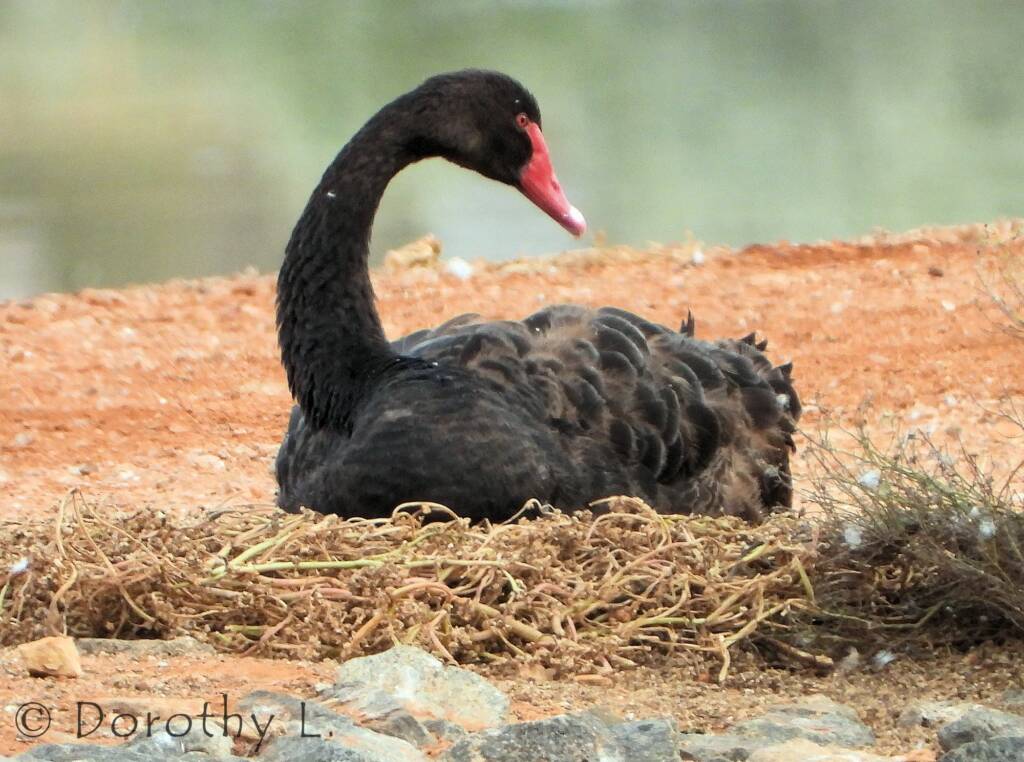

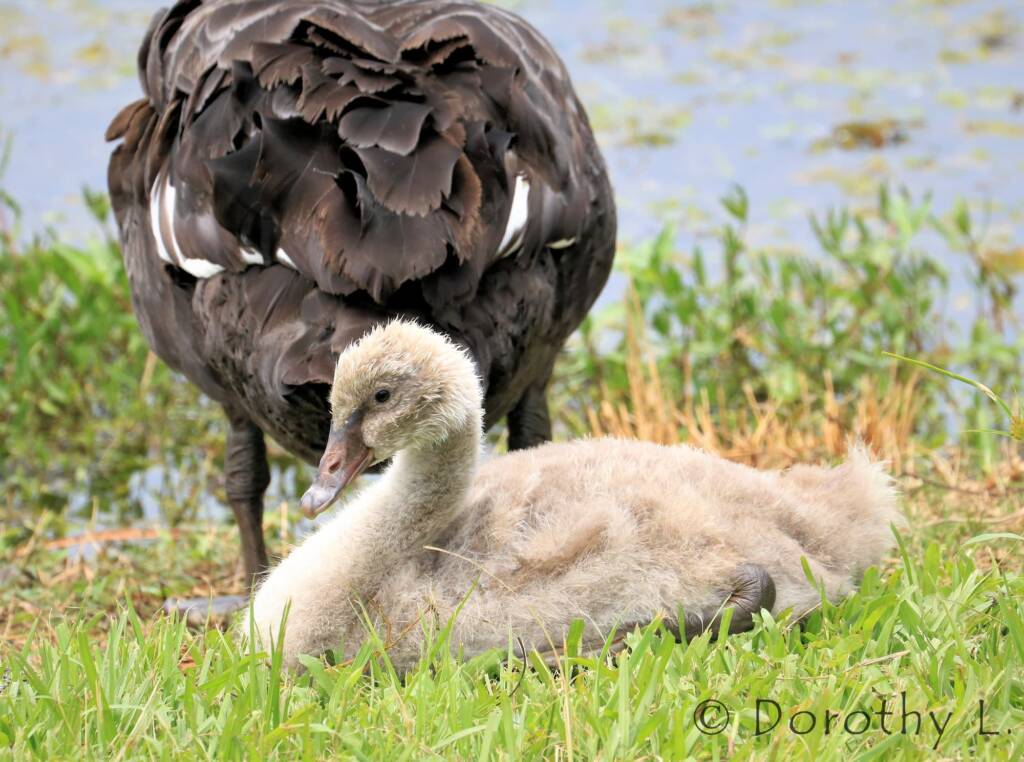
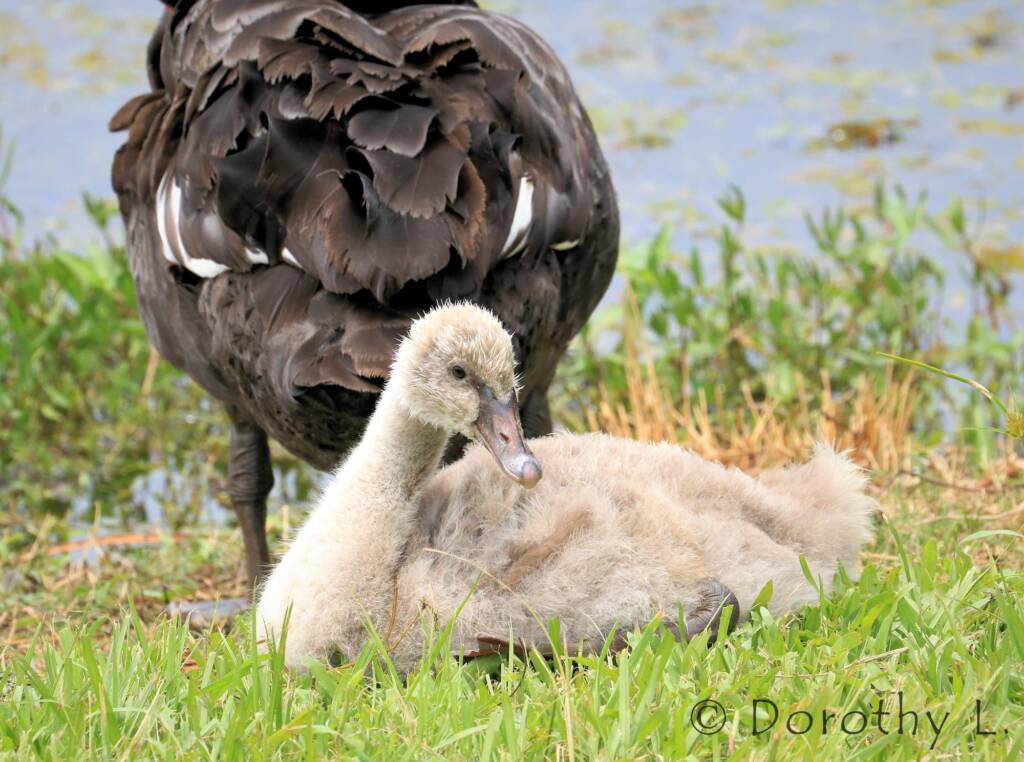

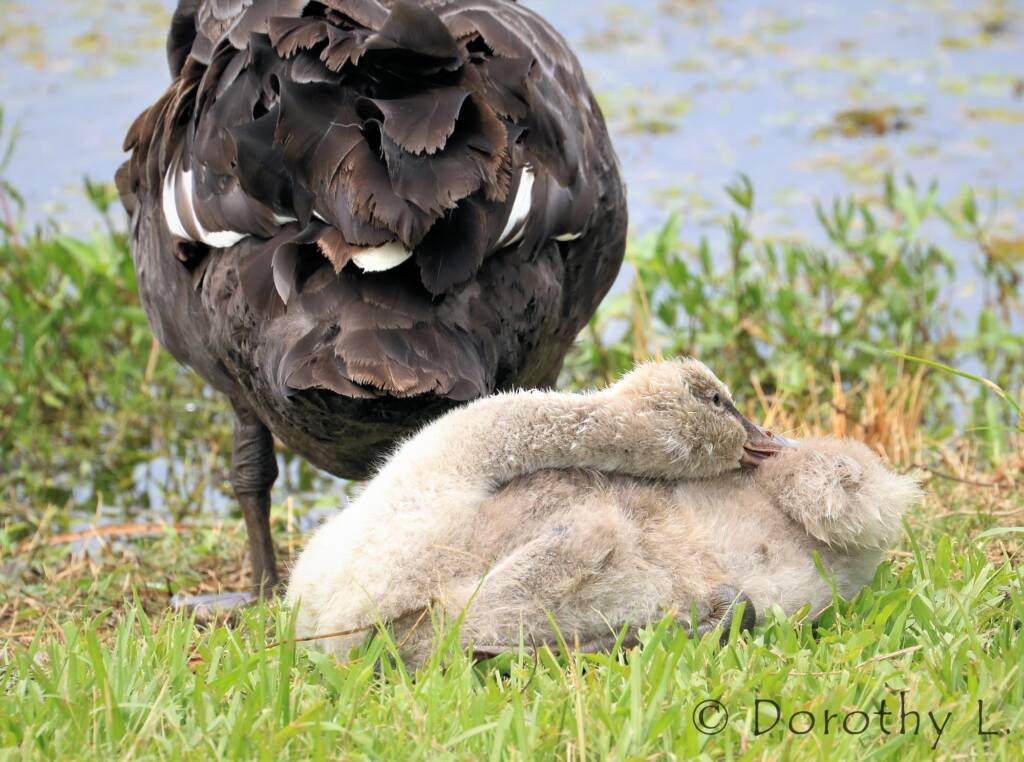
A baby swan is called a cygnet, which is derived from the Latin Cygnus, the word for swan. As the juvenile swan grows, it loses it grey-cream colour, and the immature black swan feathers become mottled grey.
Whilst the Black Swans are known to form monogamous pairs, recent studies have shown that around a third of all broods exhibit extra-pair paternity. This is where the animal, in this case the black swan, form a relationship to mate and raise their offsprings, whilst still engaging in sexual activities with other partners. In studies, genetic tests have shown that some offspring raised by a monogamous pair come from the female having mated with another male partner. This is called extra-pair copulation. There is some interesting research by biologists that discuss the varieties of monogamy.1,2,3
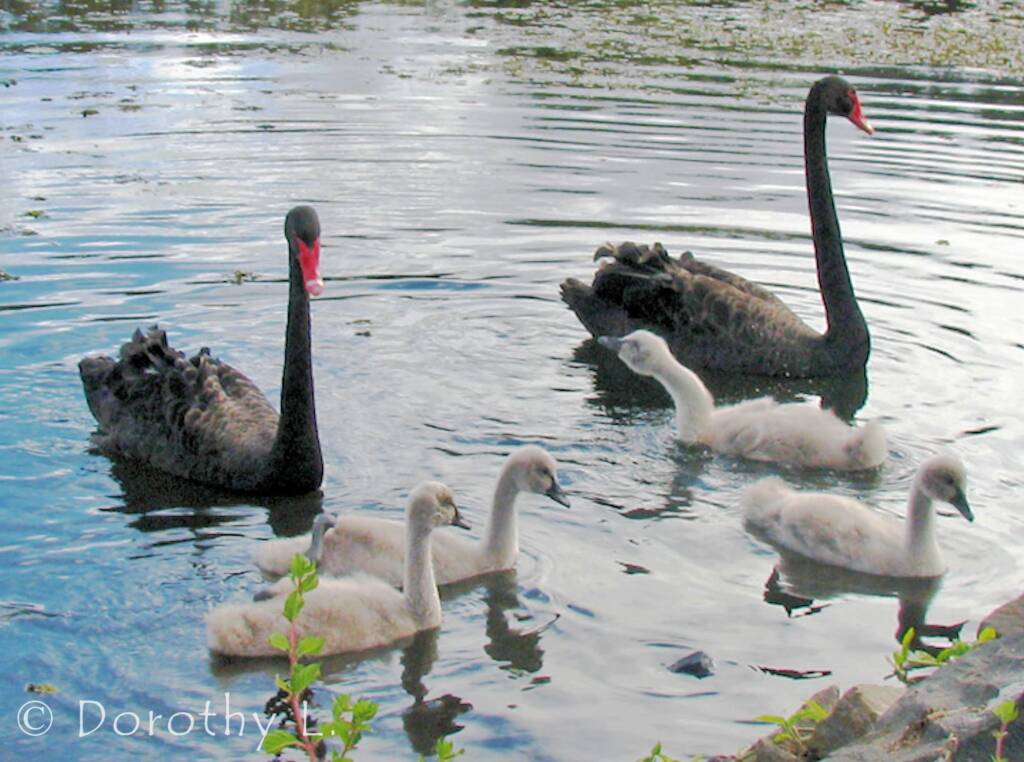
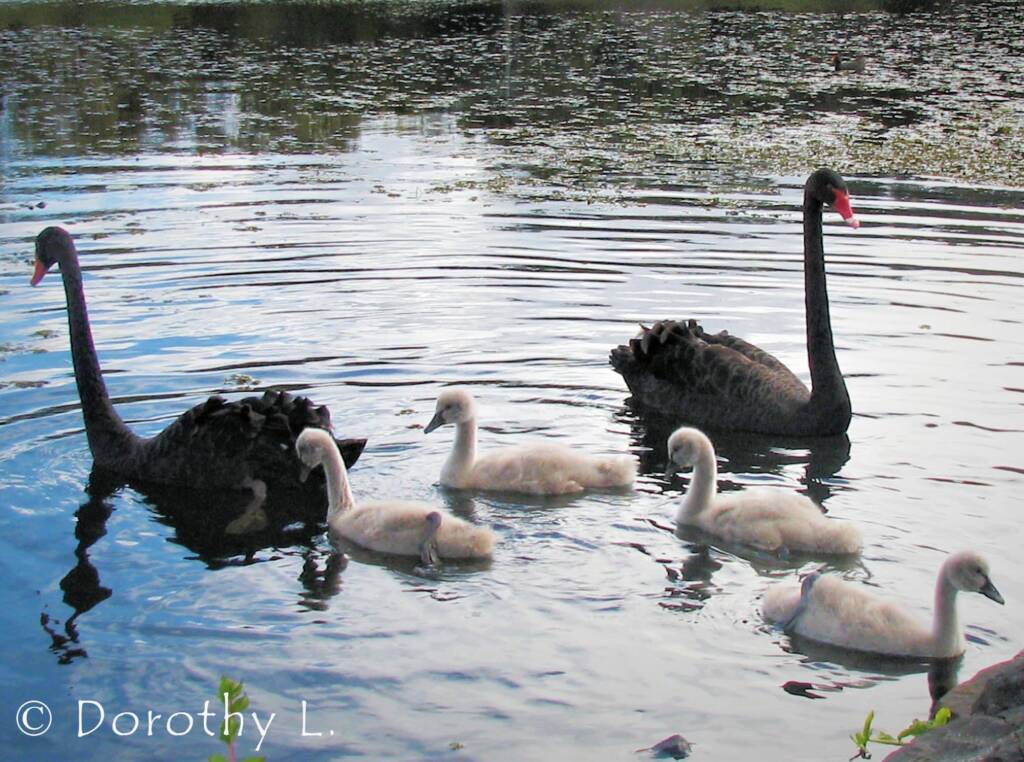
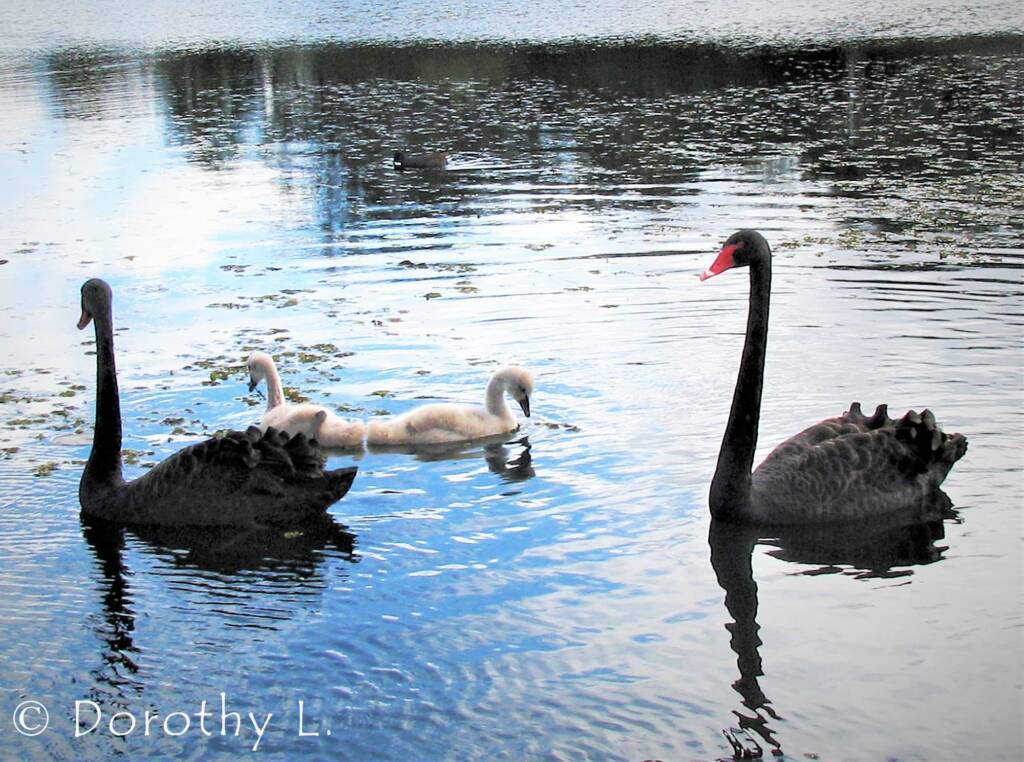
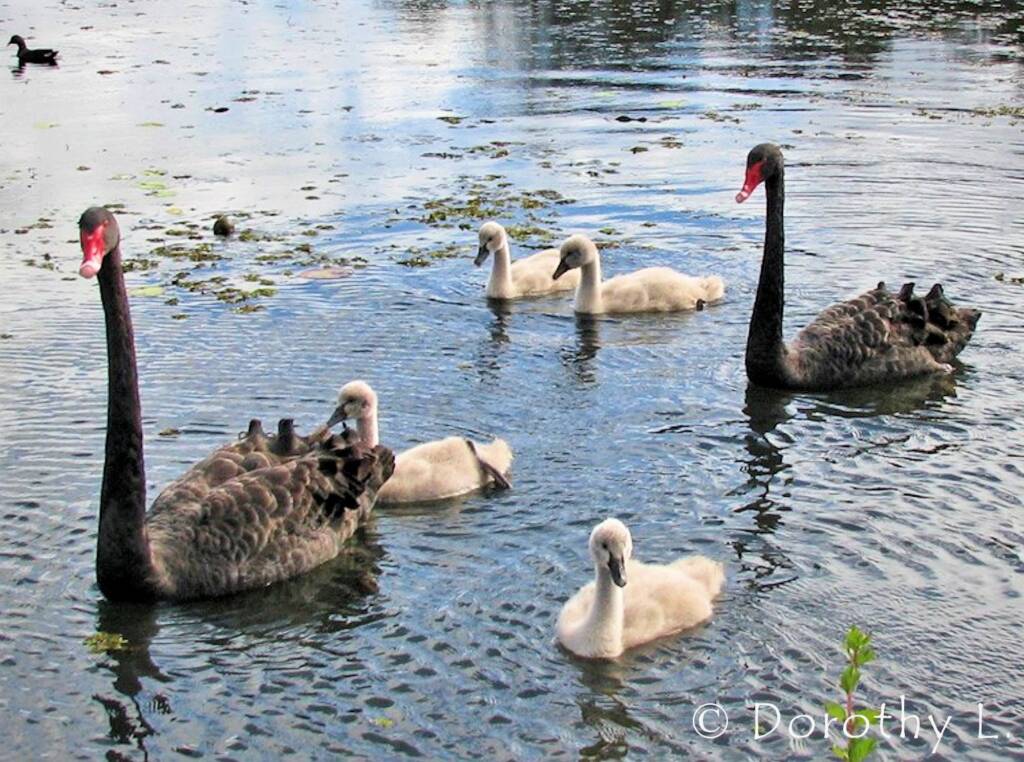
In addition to this, there are estimated one-quarter of all pairings are homosexual, mostly between male swans. Studies show they may steal nests or form temporary threesomes with a female swan to obtain eggs.
See our Footnote & References for further information.
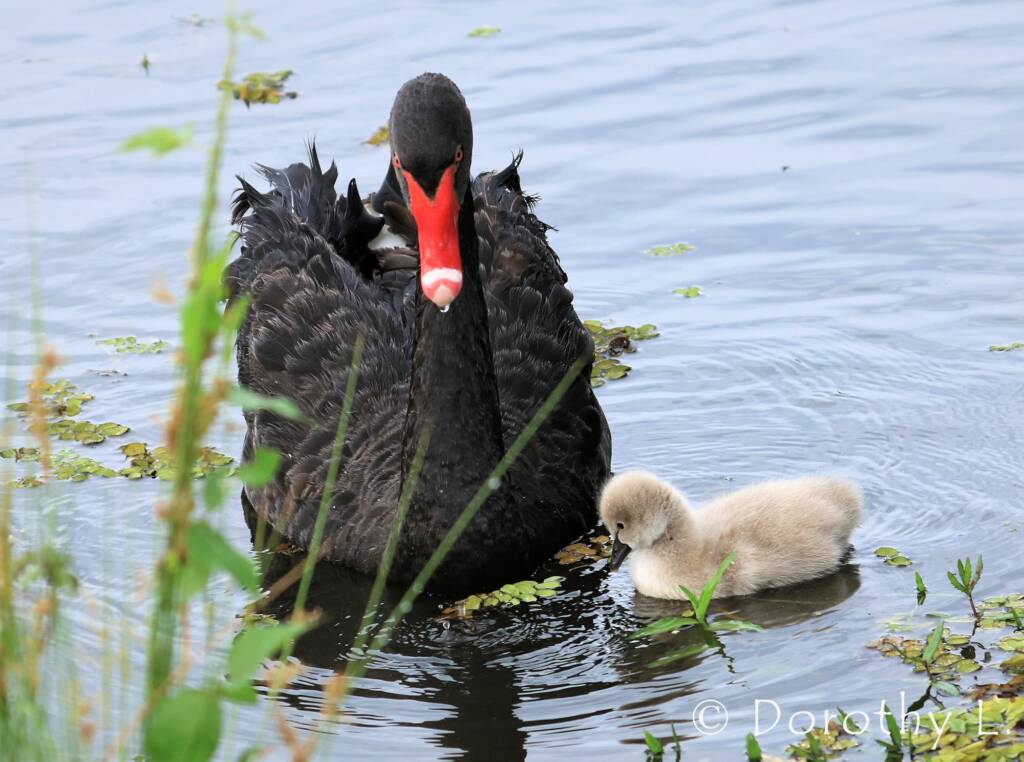
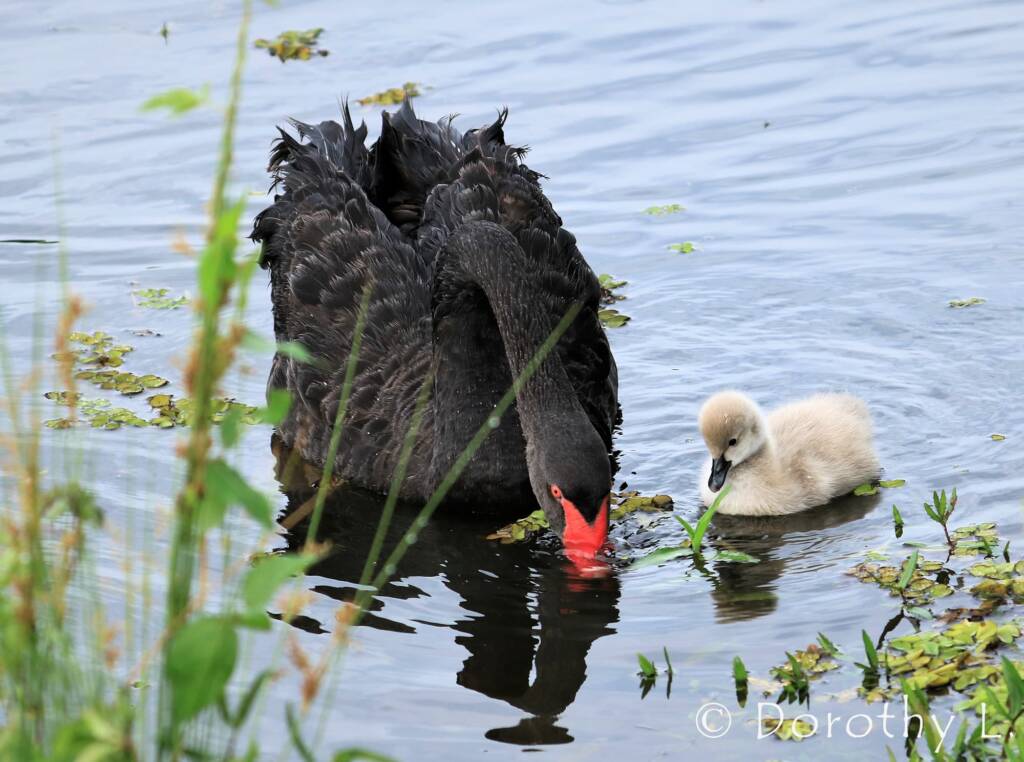

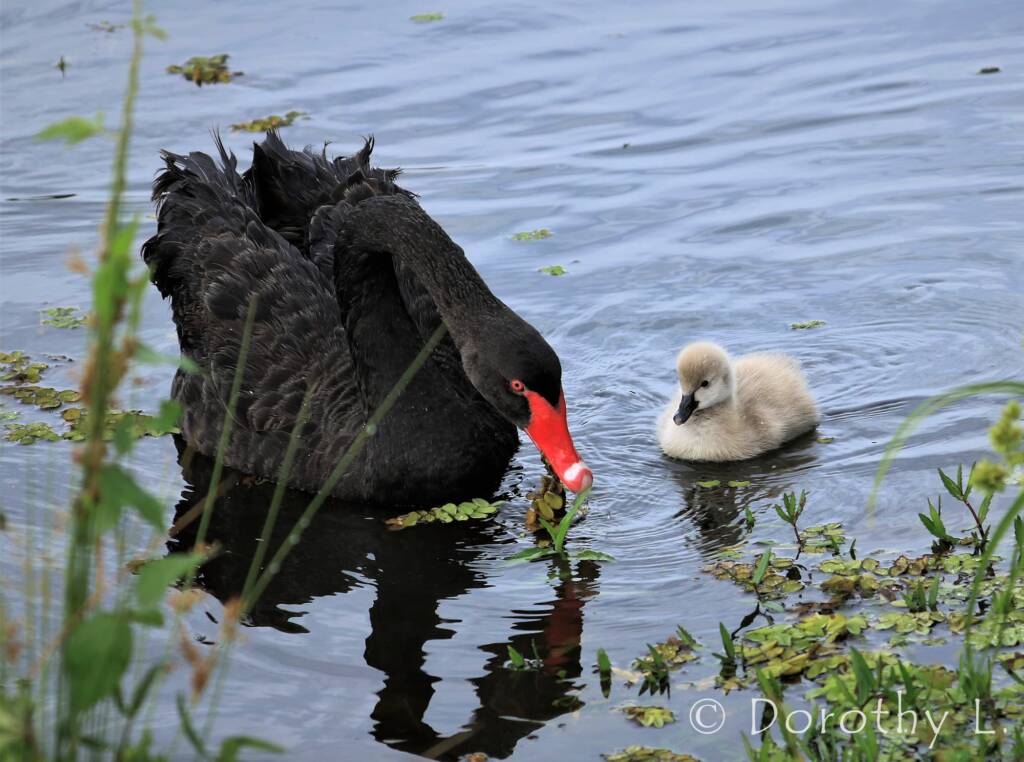
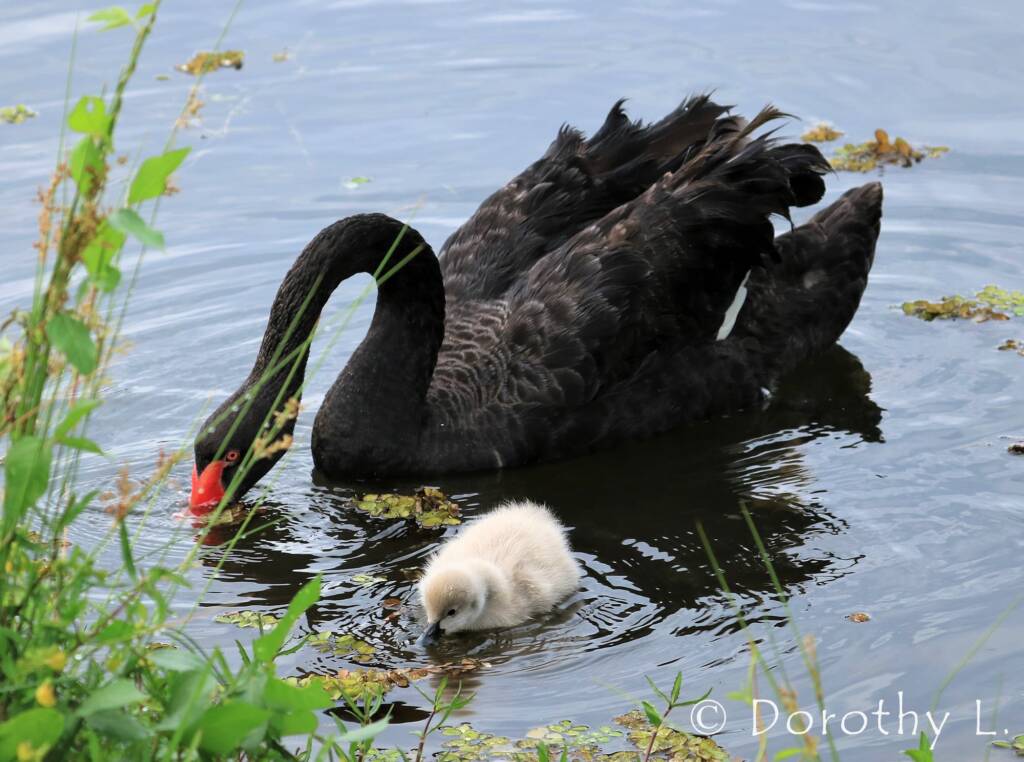
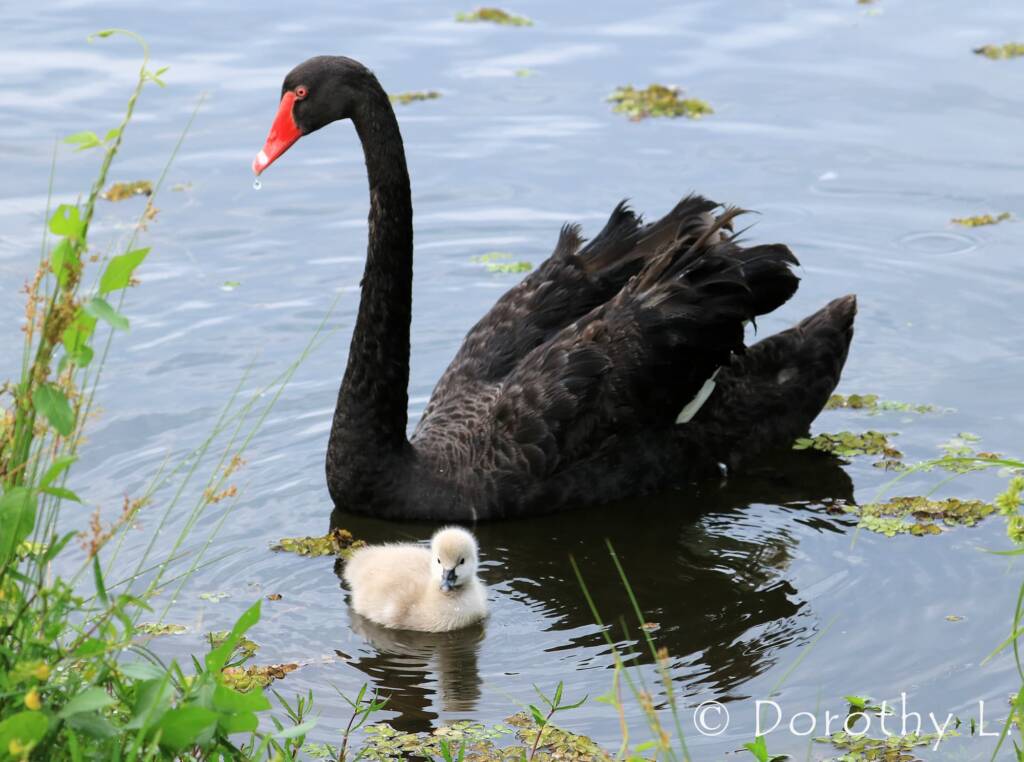
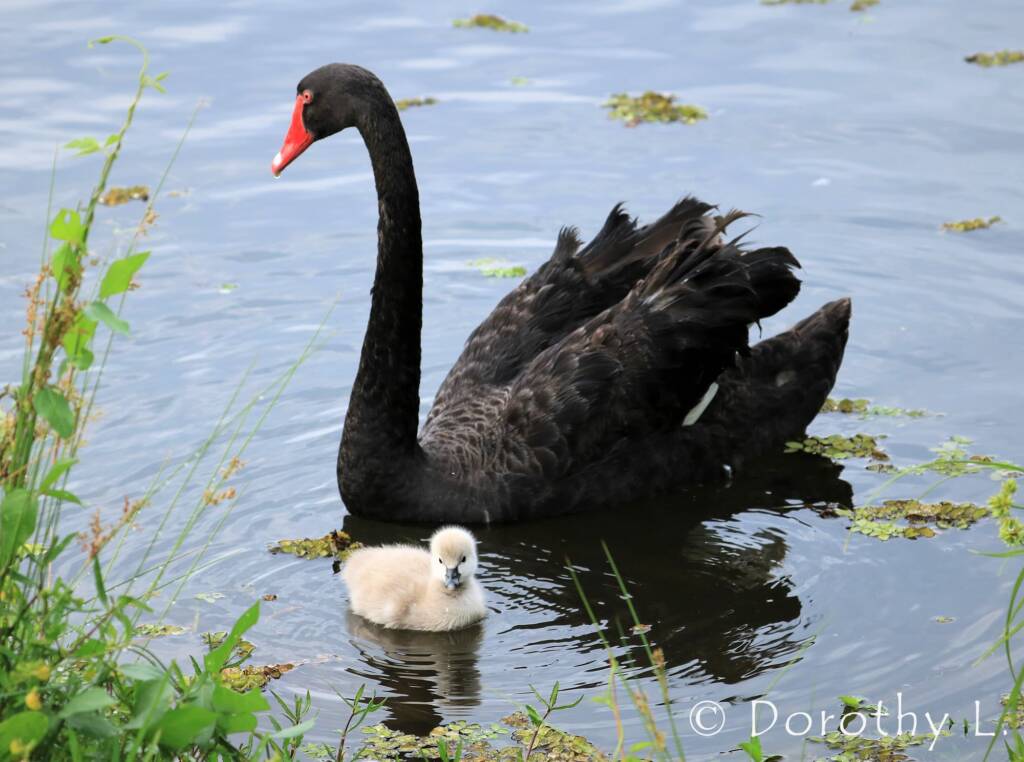
Sadly, the parent swans only have one cygnet left, after the other cygnets were taken by large eels.
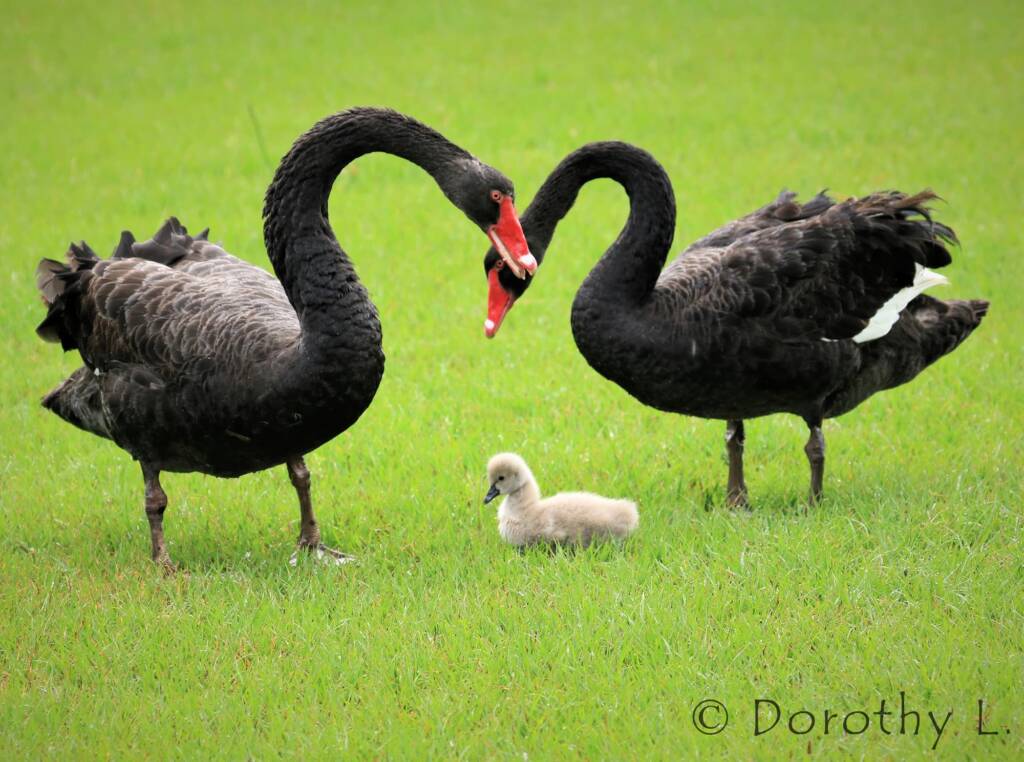

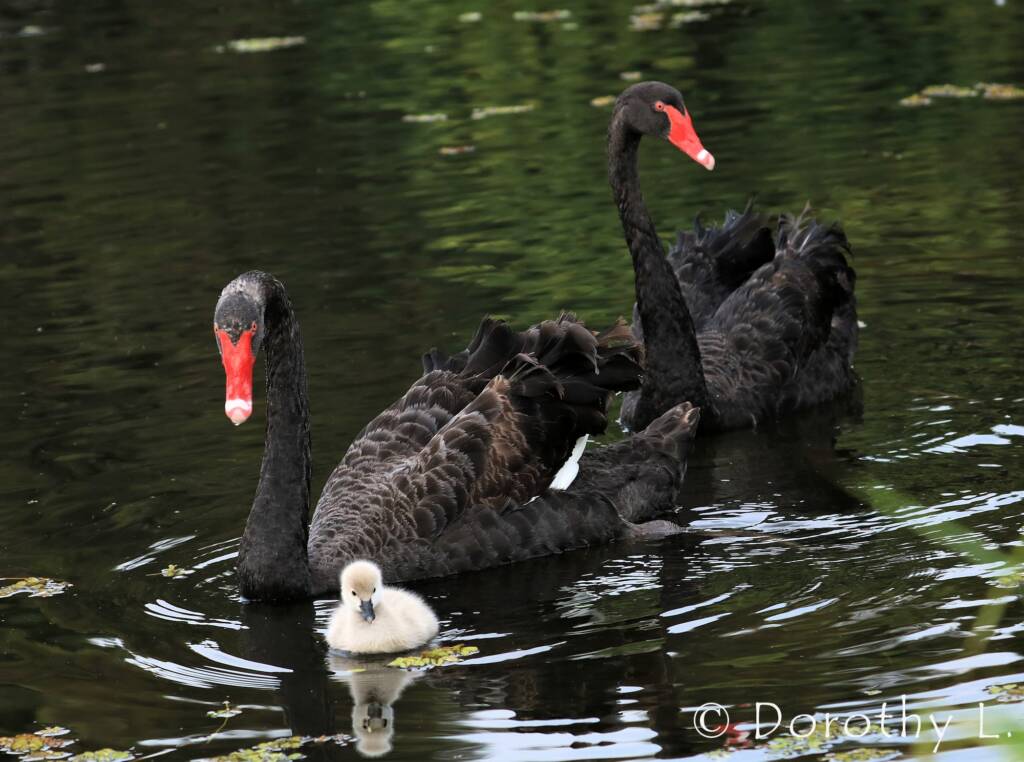
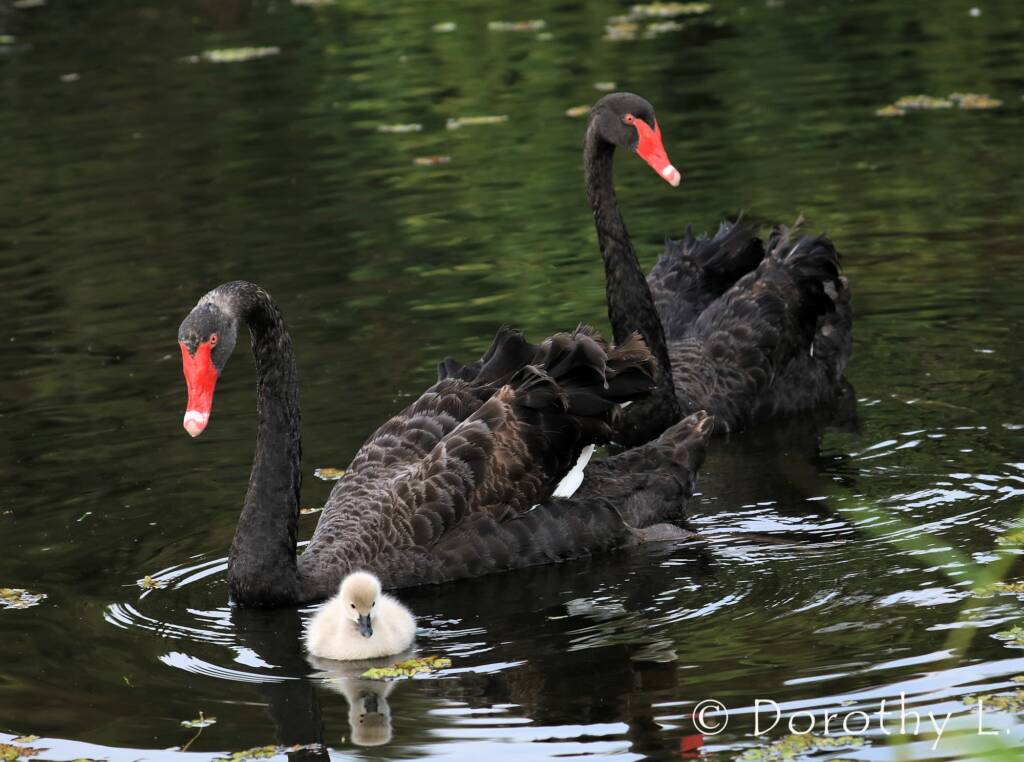
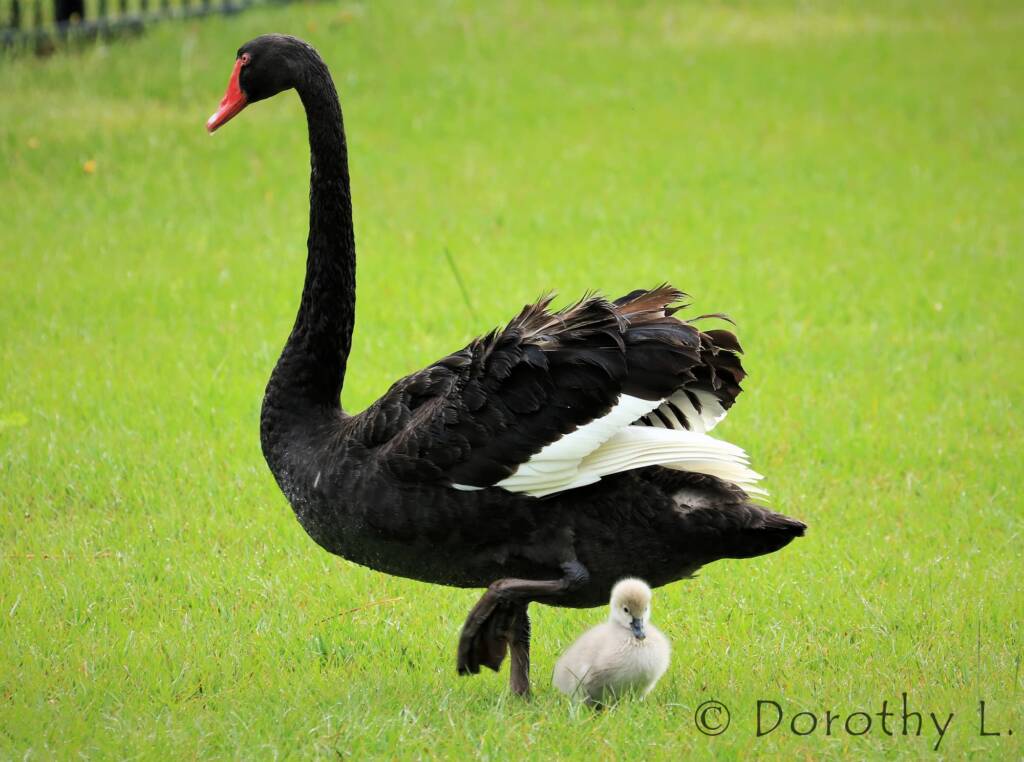


Whilst the young juveniles are a light cream grey-brown, as they grow into the immature phase, their feathers become a scalloped light to mid-grey colour, with black tips on the primaries. They also have a paler bill.


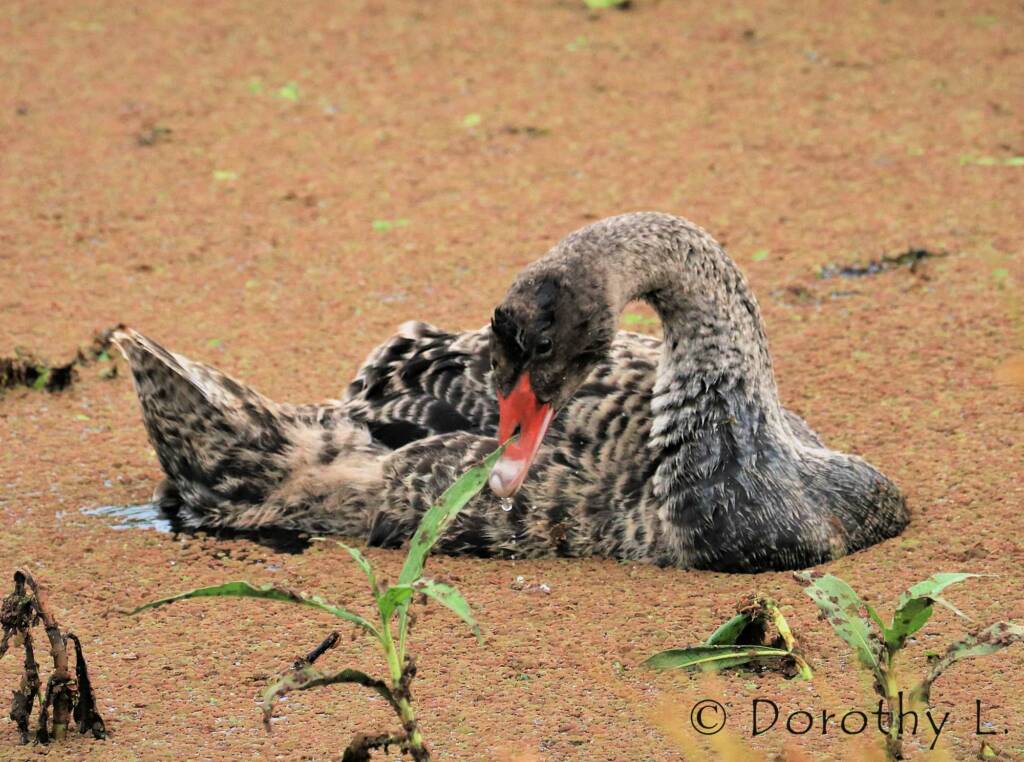

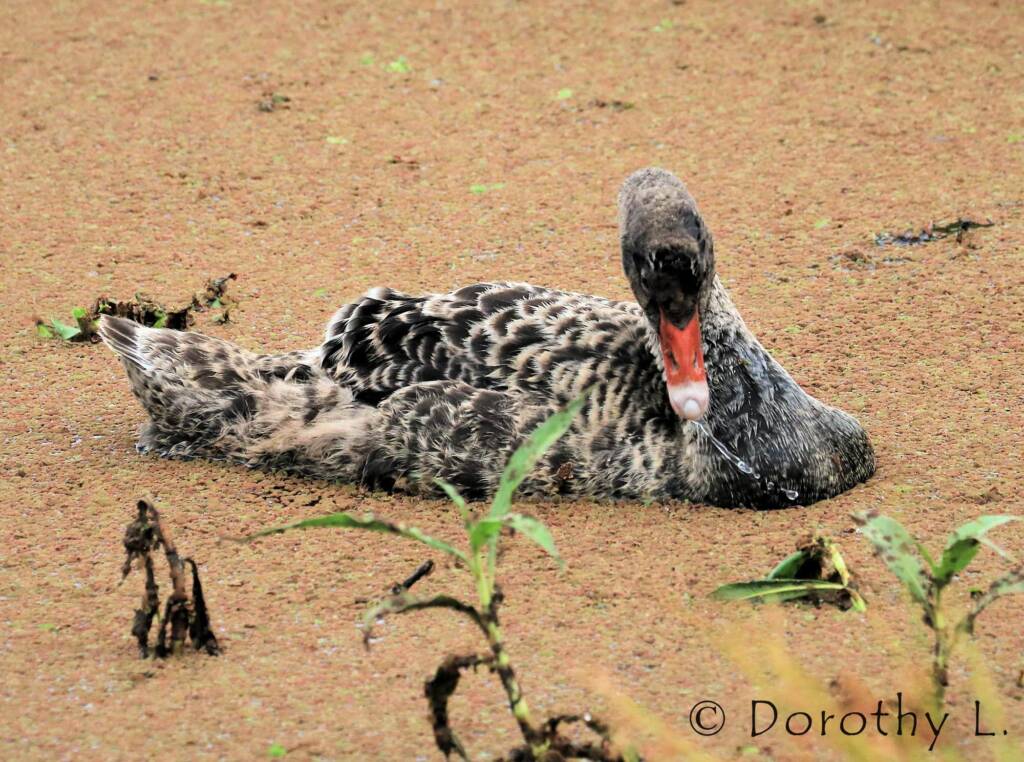
In this series of photographs the young swan was imitating its parent.

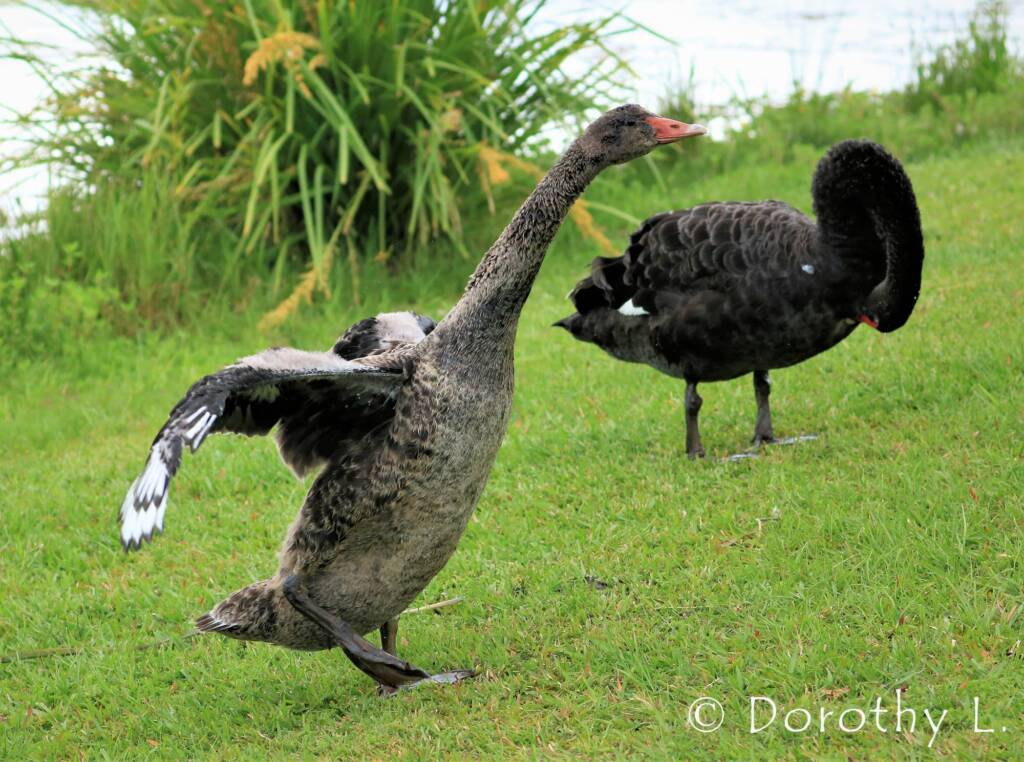
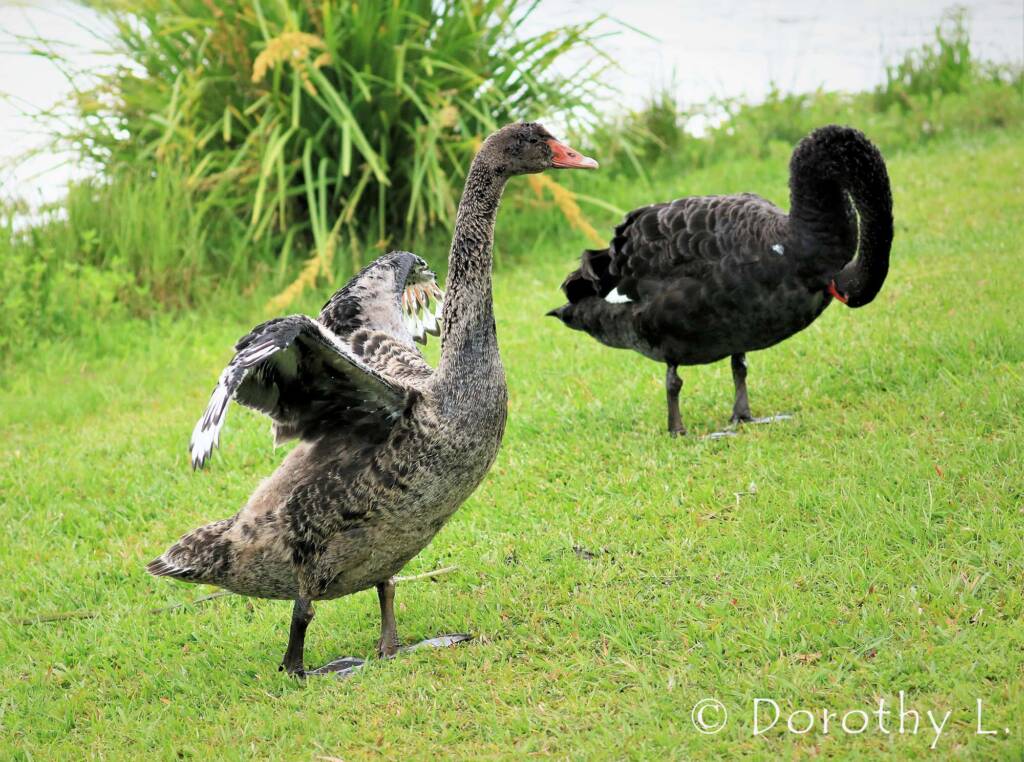


Images © Dorothy L
- Scientific classification
- Kingdom: Animalia
- Phylum: Chordata
- Class: Aves
- Order: Anseriformes
- Family: Anatidae
- Genus: Cygnus
- Species: C. atratus
- Binomial name: Cygnus atratus
- Synonyms:
- Anas atrata
- Chenopis atratus

Footnote & References
- Kraaijeveld, Ken; Gregurke, John; Hall, Carol; Komdeur, Jan & Mulder, Raoul A. (May 2004). “Mutual ornamentation, sexual selection, and social dominance in the black swan”. Behavioral Ecology. 15 (3): 380–389. doi:10.1093/beheco/arh023.
- Extra-pair paternity does not result in differential sexual selection in the mutually ornamented black swan (Cygnus atratus), K. Kraaijeveld, P. J. Carew, T. Billing, Greg J. Adcock, Raoul A. Mulder, published 15 April 2004, https://doi.org/10.1111/j.1365-294X.2004.02172.x
- Homosexual Animals Out of the Closet November 16, 2006 LiveScience, https://www.livescience.com/1125-homosexual-animals-closet.html
Black SwanBlack Swan – nesting & sexuality Black Swans at the Sewage Ponds Black Swan – water & reflections
BirdsApostlebird Australasian Darter Australasian Figbird Australasian Gannet Australasian Grebe Australasian Pipit Australasian Robins Australasian Shoveler (Spatula rhynchotis) Australasian Wrens Australian Babblers Australian Bustard Australian Chats Australian Magpie Australian Pelican Australian Pratincole (Stiltia isabella) Australian White Ibis Bassian Thrush Black-faced Cormorant Black-faced Woodswallow Black Swan Bowerbirds Brolga Brown Songlark Channel-billed Cuckoo Cinnamon Quail-thrush Cormorants Cuckooshrikes and Allies Dotterels Lapwings Plovers Doves & Pigeons Emu Fairy Martin Finches Grey Fantail Grey Teal Honeyeaters Kingfishers Little Friarbird Little Grassbird Magpie-lark Masked Woodswallow Noisy Pitta Olive Whistler Paradise Riflebird Pardalotes Parrots Pheasant Coucal Pied Butcherbird Rainbow Bee-eater Raptors Rufous Fantail Redthroat Rufous Bristlebird Silver-crowned Friarbird Torresian Crow Waders Welcome Swallow (Hirundo neoxena) Whiskered Tern (Chlidonias hybrida) White-browed Woodswallow White Capped Noddy White-faced Heron White-necked Heron Willie Wagtail Yellow-throated Scrubwren
